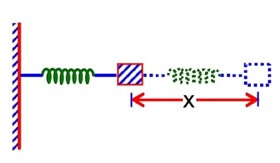Simple Harmonic Motion
Get insights from 19 questions on Simple Harmonic Motion, answered by students, alumni, and experts. You may also ask and answer any question you like about Simple Harmonic Motion
Follow Ask QuestionQuestions
Discussions
Active Users
Followers
New answer posted
2 months agoContributor-Level 10
Using general equation of SHM :
At t = 0
Since it is moving in – x direction
New answer posted
2 months agoContributor-Level 10
Resonance occurs when the frequency of an external periodic force matches the natural frequency of a system. From that, physicists know that resonance causes the amplitude of oscillations to increase significantly. This can be beneficial in devices, such as musical instruments, but dangerous in structures like bridges.
New answer posted
2 months agoContributor-Level 10
The phase in SHM tells us the position and direction of motion of the particle at a specific instant. It determines the state of oscillation and includes both displacement and time information.
New answer posted
2 months agoContributor-Level 10
The restoring force in SHM is the force that always acts towards the mean position and is directly proportional to the displacement from it. It follows F=? kx. Here, the negative sign indicates the force is in the opposite direction to the displacement.
New answer posted
3 months agoContributor-Level 10
As we know that for SHM, so
Subtracting equation (ii) from equation (i), we have
New answer posted
3 months agoContributor-Level 10
In SHM sum of kinetic and potential energy will be constant and average kinetic energy & average potential energy in one time will be remains same.
Taking an Exam? Selecting a College?
Get authentic answers from experts, students and alumni that you won't find anywhere else
Sign Up on ShikshaOn Shiksha, get access to
- 65k Colleges
- 1.2k Exams
- 682k Reviews
- 1800k Answers

